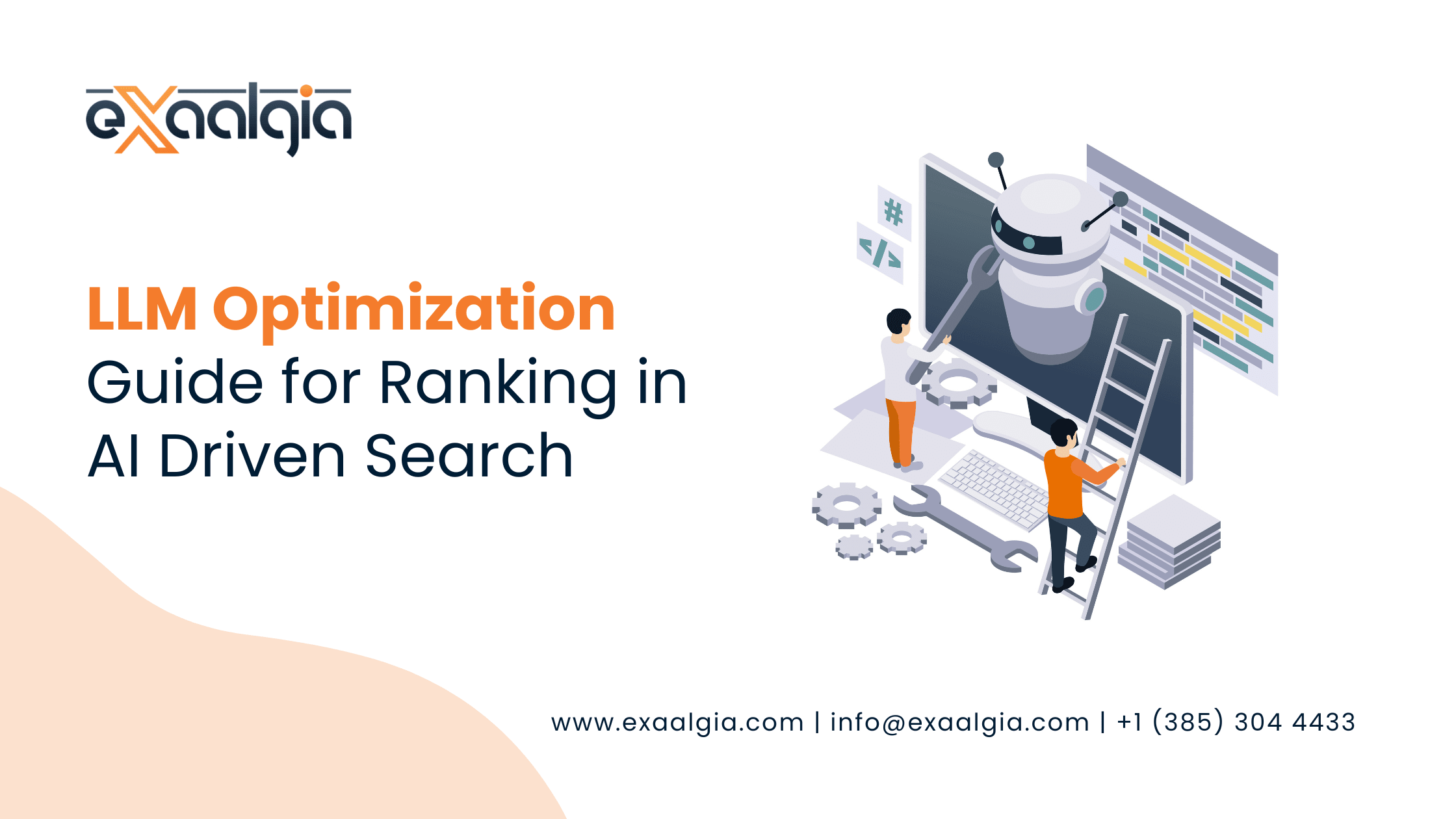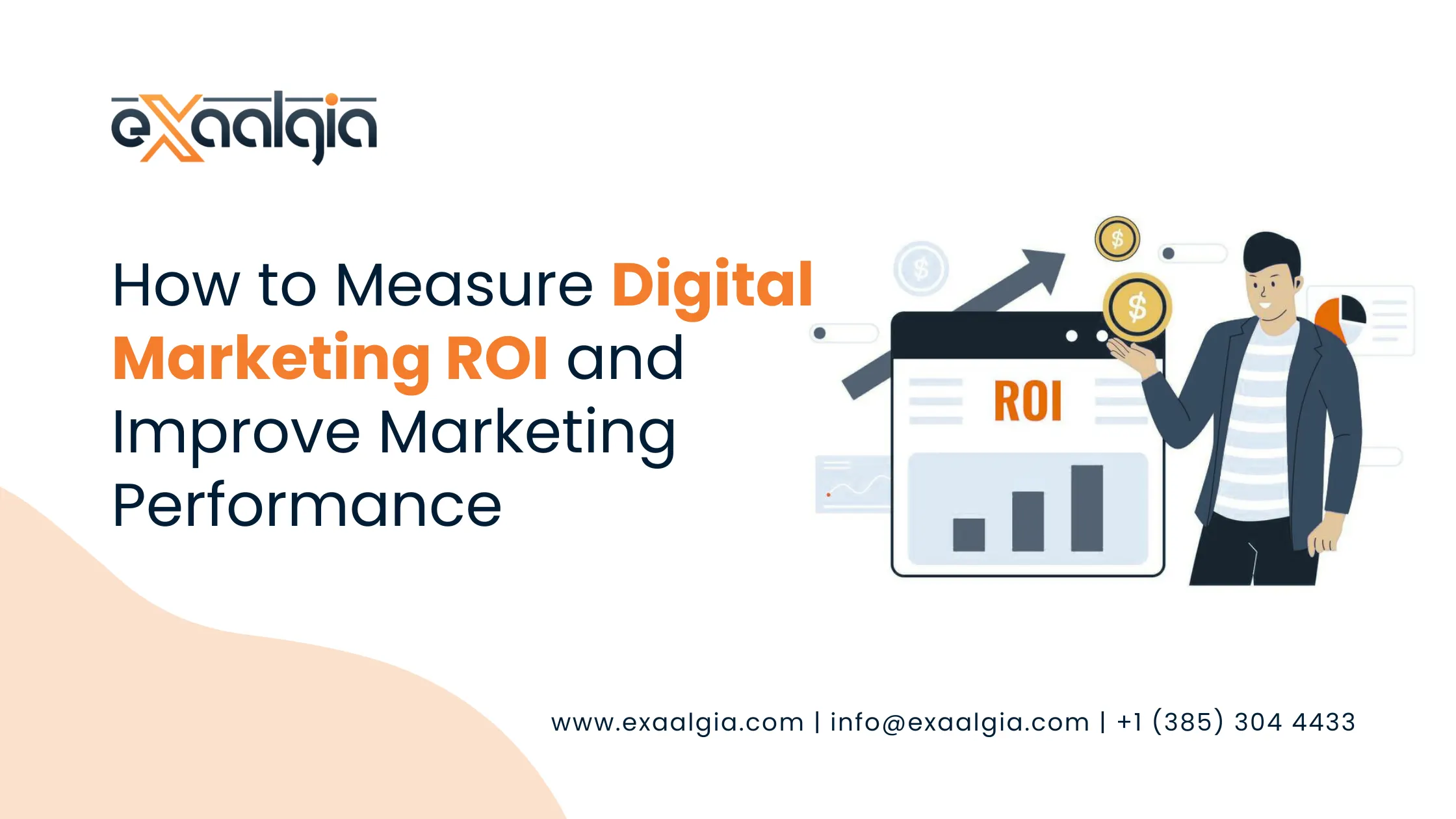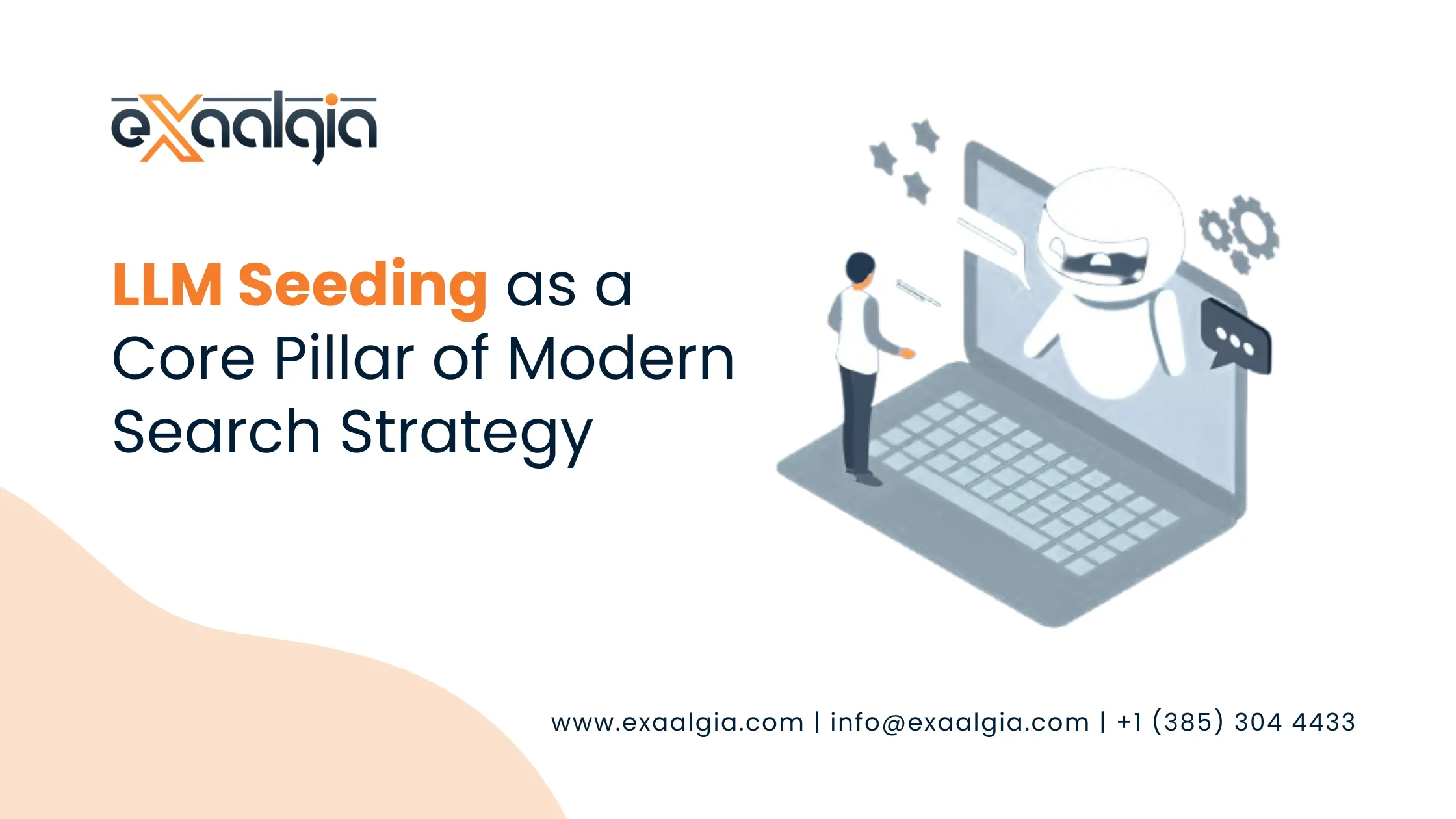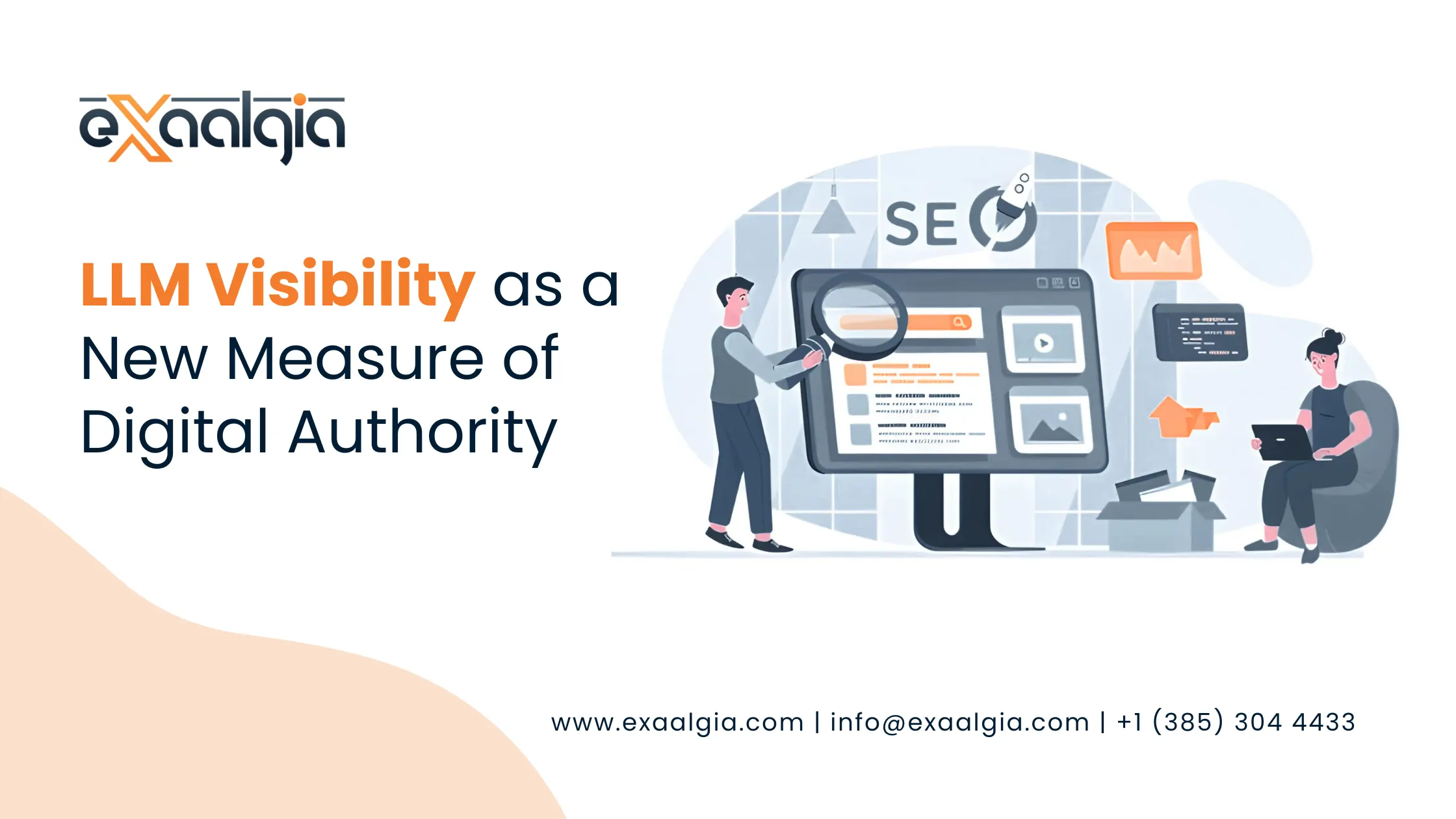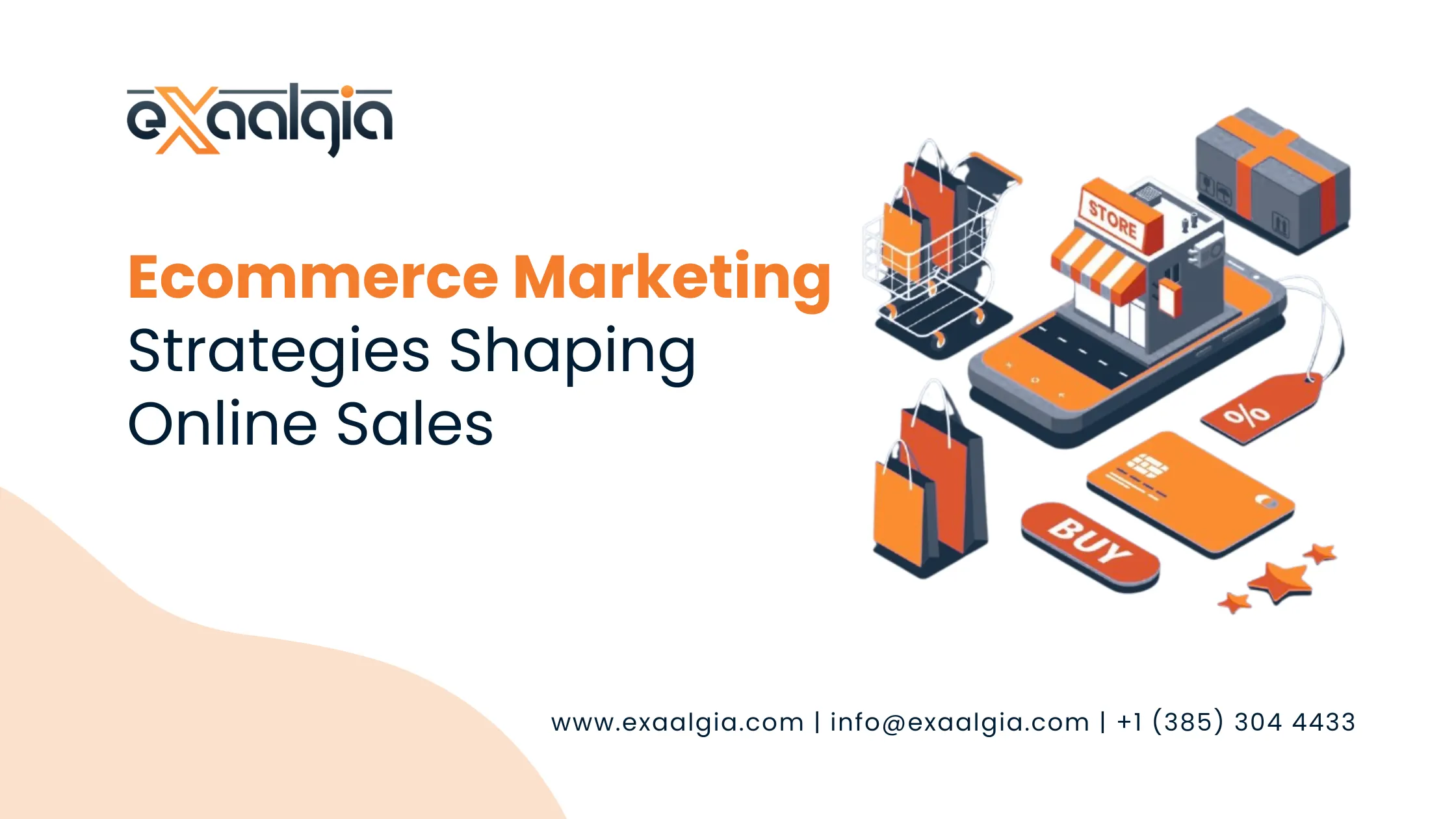In the era of AI-driven search, where ChatGPT, Claude, Gemini, Perplexity and other large language models are becoming the go-to sources for instant answers, merely ranking high on Google’s SERPs is no longer enough. You don’t just want clicks, you want to be seen, be cited, be trusted in the AI answers themselves. That’s where LLM Optimization (LLMO) comes in.
If you are still thinking only about SEO the old way, then you are already behind the curve. Brands that understand LLMO early will claim visibility where it counts: in AI-powered answers, snippets, and generative overviews, places where users often stay without clicking away. Let’s explore what LLMO is and how to own it.
What is LLM Optimization (LLMO)?
LLMO stands for Large Language Model Optimization, a strategy to ensure your content and brand are surfaced inside the answers generated by AI models. It’s not just about ranking on Google; it’s about being mentioned, cited, recommended, or even summarized inside AI responses.
In contrast to traditional SEO, which optimizes for web page ranking, click-throughs, keywords, etc., LLMO focuses on:
- Getting cited in responses by AI tools
- Serving content that AI feels confident using
- Structuring content so AI can parse, extract, and present it
Think: instead of blue links, your brand becomes part of the narrative these models build when someone asks a question.
Why LLMO Matters Right Now
- Zero-click search is on the rise: Many people now get answers immediately from AI overviews, without clicking through to websites. Your content could be helping, but only if it’s visible inside those AI answers.
- Behavioural shift: Users are getting more comfortable with asking AI tools direct questions rather than browsing multiple web pages or sifting through search results.
- Competitive advantage: As of now, many brands are still behind the curve. If you start optimizing for LLMs now, you stand to get an early edge when AI-powered search becomes the norm.
- Trust & authority become more crucial: AI models tend to favor content from trusted sources. If your content is high quality, well-cited, and trustworthy, it stands a greater chance of being surfaced.
Core Pillars of LLM Optimization
Here are the essential foundations on which an effective LLMO strategy should be built:
A. Authority & Trust (E-E-A-T)
- Experience, Expertise, Authority, Trustworthiness are more than SEO buzzwords. For LLMs, these are proof points. Citing studies, using expert authors, getting mentions in reputable publications, publishing original data, all help.
- Use credible sources, include citations, show credentials. If someone asks “Is X or Y better?”, models are likelier to pull from content that shows depth, rigor, and authority.
B. Structured & Conversational Content
- Structure your content with headings, subheadings, bullet lists, tables, FAQ sections. This helps AI identify and fetch exactly what it needs.
- Use schema markup: FAQ schema, HowTo schema, Article schema, Product schema, etc. Schema tells AI and search engines what content is about and how to use it.
- Focus on natural, conversational language. Long-tail queries, question-style headings, real user language from forums or “People Also Ask” boxes or platforms like Reddit/Quora.
C. Topic Clusters & Content Ecosystems
- Instead of one-off articles, build clusters around pillar content. For example, one pillar page on “LLM Optimization” and cluster posts around “How to write conversational content for AI”, “Schema best practices”, “Tracking LLM citations”, etc.
- Interlink cluster content so there is a strong, coherent web of content that signals topic authority to both traditional search engines and AI models.
D. Backlinks, Mentions & Digital PR
- AI models often draw from content that’s been referenced or linked by high authority domains. Digital PR campaigns, guest posting, original research, data insights, these help.
- Mentions from credible sites not only improve your backlink profile, but also raise the perception of authority. This contributes to trust signals for LLMs.
E. Multi-Format & User-Friendly Assets
- Use visuals, infographics, tables, charts. Visuals help people and AI. Alternately, make content scannable: bullet points, summary boxes.
- Create content in different formats: blog posts, video transcripts, summaries, social posts. The broader your footprint, the more chances AI has to pick up your content.
LLMO vs Traditional SEO: Key Differences
Here are side-by-side contrasts to help you understand what’s different (and what still overlaps):
| Aspect | Traditional SEO | LLM Optimization (LLMO) |
| Goal | Rank high in SERPs, get clicks | Be cited or included in AI-generated answers (zero-click visibility) |
| Keywords focus | Broad & high-volume terms, keyword matching | Long-tail, conversational queries, natural language |
| Content style | SEO-driven, keyword heavy, optimization for search engine crawlers | Trustworthy, structured, human-friendly, helpful answers |
| Authority | Backlinks, domain authority, SEO signals | Plus experience, expertise, citations; content must be clearly from credible sources |
| Tracking success | Traditional SEO metrics (rankings, traffic, CTR) | Also AI mentions, AI citations, share of voice in AI outputs, “AI visibility” |
You still need traditional SEO well done, many best practices overlap, but LLMO adds new layers.
Tracking LLM Visibility: Metrics That Matter
You can’t improve what you don’t measure. Here are metrics and tools to monitor your success in LLMO:
- AI-based citations / mentions: How often does your brand or content appear in responses by ChatGPT, Gemini, Perplexity, etc.? Are you being quoted or referenced?
- Topic-level inclusion: For industry or niche queries, are competitors being mentioned and you are not? Which content gaps exist?
- Traffic shifts: Use Google Analytics 4 (GA4) or similar to track referral / origin of traffic. While “traffic from LLMs” can be murky, watch for patterns or drop-offs in organic clicks but increases in branded or conversational query traffic.
- Share of Voice (SOV) in AI outputs: Tools like Ahrefs Brand Radar, Semrush’s AI tracking, Ubersuggest’s LLM features can help measure how visible you are compared to competitors.
- Performance of structured content: Which FAQ or HowTo pages are getting picked up? Which schema types are working best for you?
Practical Steps to Launch Your LLMO Strategy
Here’s a blueprint to get started, even if you’re just beginning:
Audit existing content
- Identify posts or pages that already have good authority or traffic.
- See if they are structured well, use schema, answer conversational queries.
- Update them, add FAQs, refine headings, include more trustworthy citations, add schema markup.
Keyword and query research for conversational long-tails
- Use tools like “People Also Ask”, Reddit, Quora, forums.
- Identify the way people ask things. For example: “How do I train LLMs safely?” vs “LLM training best practices”.
Build topic clusters
- Define a pillar content piece that covers LLM Optimization in depth.
- Then write cluster content around subtopics: content structure, authority, AI visibility tracking, schema, etc.
- Interlink extensively.
Use schema and structured data heavily
- Implement FAQ schema, HowTo schema, Article schema, Product schema where relevant.
- Use tables, bullet points, numbered lists.
- Ensure your content is scannable, with clear and logical organization.
Focus on authority building
- Publish original research, studies, data insights.
- Get backlinks and mentions from credible sources.
- Use digital PR.
- Ensure authorship or credentials are clear.
Diversify content formats
- Blog posts + video summaries + infographics + short social clips.
- Transcripts or snippet‐friendly content so AI can “read” and “digest” easily.
Regularly audit and refine
- Track AI visibility metrics.
- Refresh content if new facts or data emerges.
- Monitor competitor AI citations and what queries they are winning.
- Adapt content to cover gaps or emerging conversational questions.
Frequently Asked LLM Optimization Questions
Q: How long does LLMO take to show results?
A: Like SEO, it’s not instantaneous. Some visibility in AI could be gained relatively quickly if content is already strong and authoritative. But building trust, backlinks, and refining content can take several weeks to months.
Q: Do backlinks still matter?
A: Very much so. AI models tend to give weight to credibility, and backlinks & mentions from high-authority domains are strong trust signals. They contribute to E-E-A-T, which LLMs favor.
Q: Can small businesses benefit from LLMO?
A: Absolutely. In fact, smaller brands have less baggage and can often move faster. If competitors aren’t optimizing yet, you can stake a claim in AI visibility early.
Q: What tools can help me track LLM visibility?
A: Semrush AI Tracking, Ubersuggest LLM beta, Ahrefs Brand Radar, GA4 (to monitor traffic shifts), and custom audits of AI platforms by asking queries and seeing if your brand shows.
Future-Proof Your Visibility with LLM Optimization
We’ve entered a new phase of search, one where AI doesn’t just mimic web pages, it generates conversations and answers. If your brand isn’t being optimized for that space, you risk being invisible, even if you rank well in traditional search.
LLM Optimization is the bridge between traditional SEO and this AI-first search future. It’s about clarity, structure, authority, conversation. By producing content that AI trusts, structuring it for easy parsing, earning credibility, and monitoring visibility, you can ensure your brand is part of the answers people receive, not just the websites they might click.
The brands that lead in LLMO will own the conversation. The rest may find themselves fading into background noise, despite good SEO scores. So start now, build smart, measure carefully, and be ready to be the answer.

